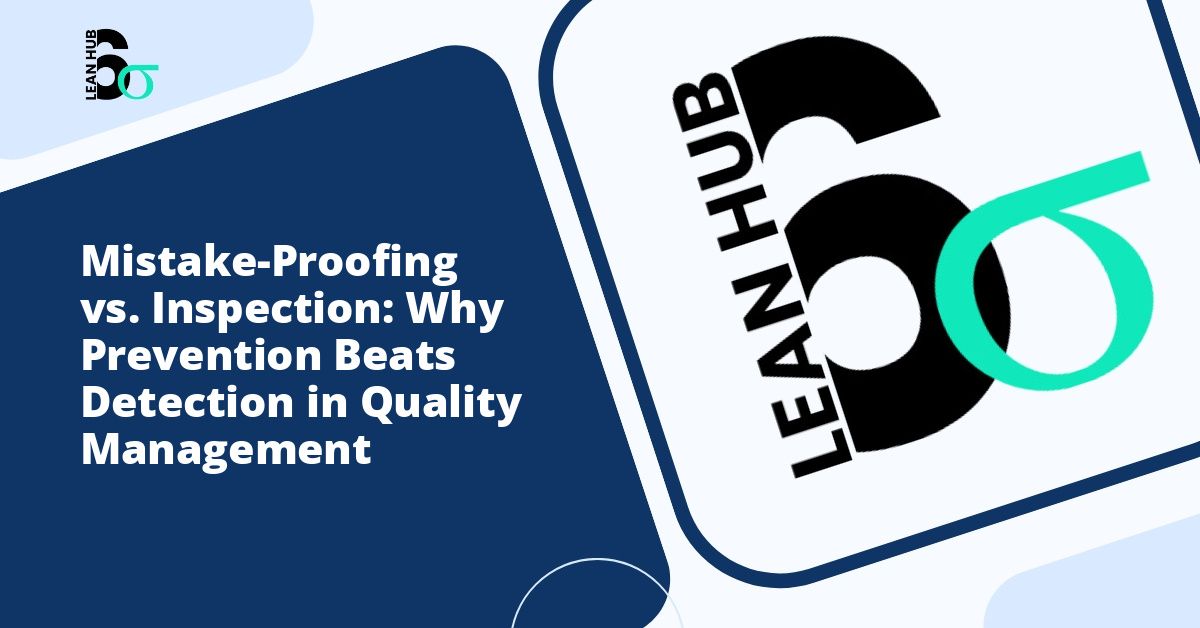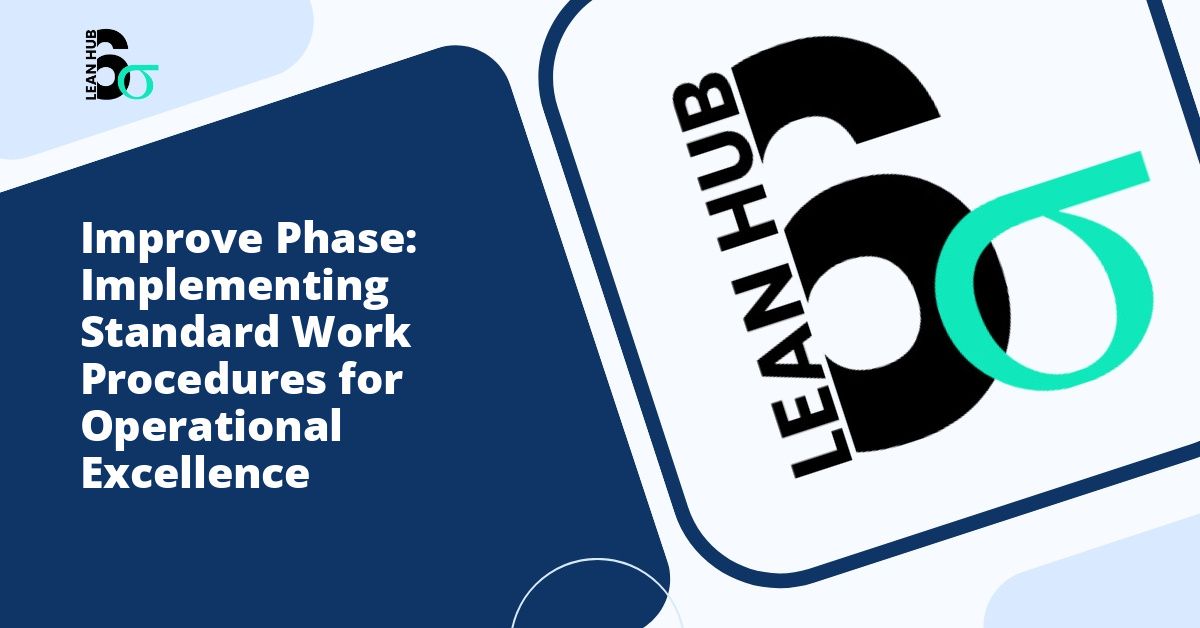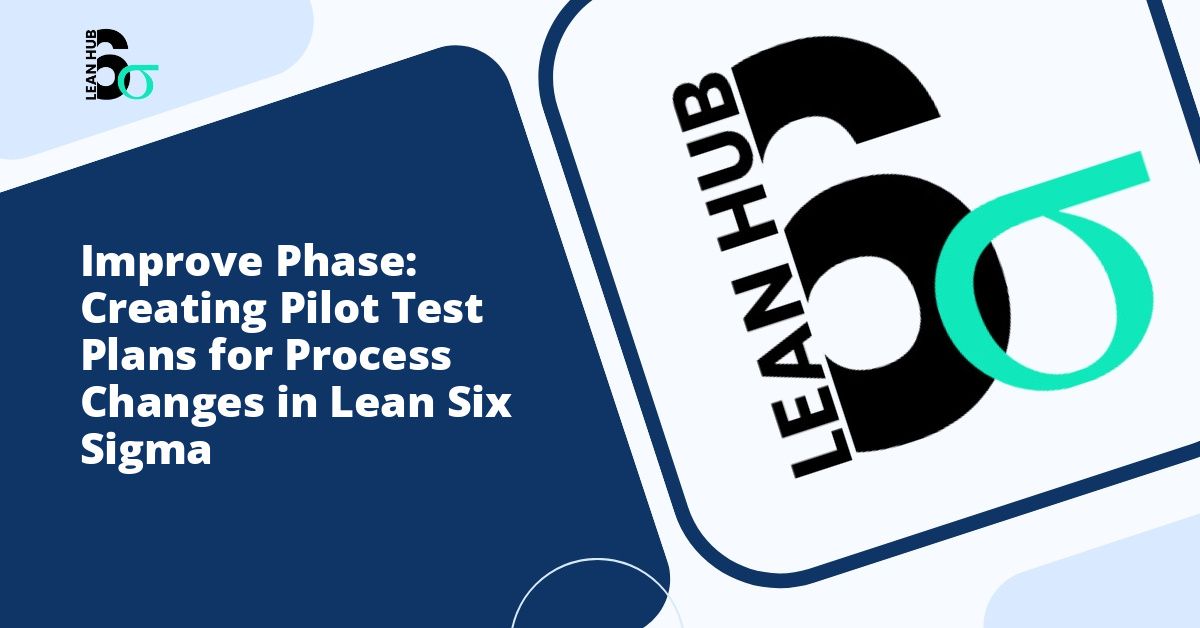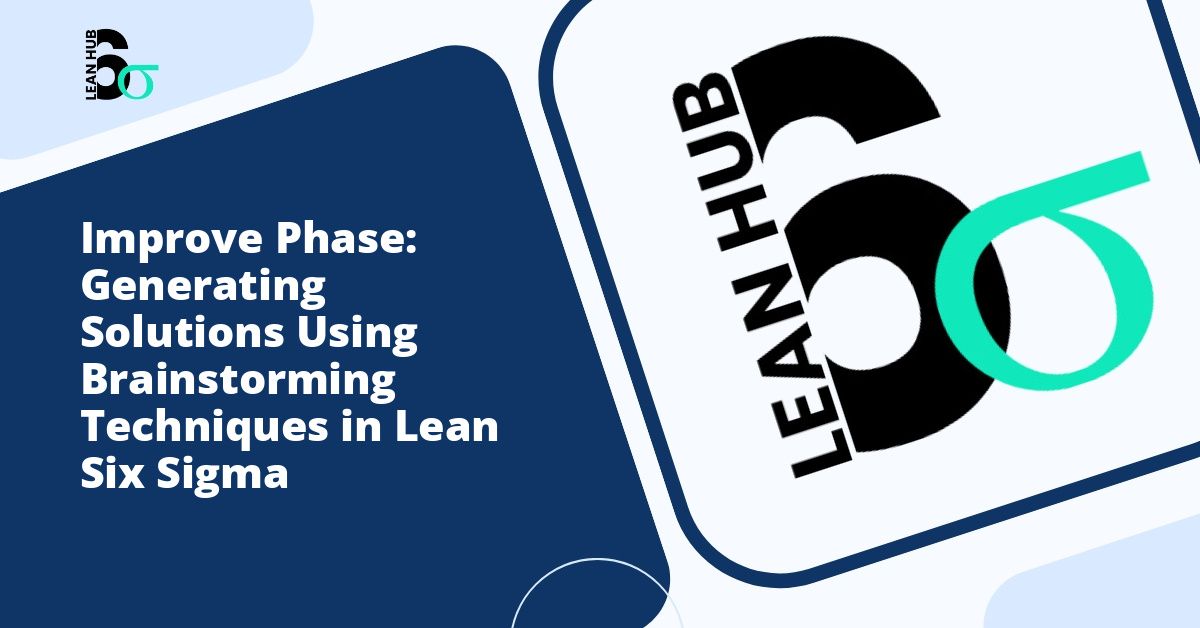In the world of quality management and continuous improvement, two fundamental approaches have dominated the conversation for decades: mistake-proofing and inspection. While both aim to reduce errors and improve product quality, they differ fundamentally in their philosophy and effectiveness. Understanding the distinction between these approaches can transform how organizations approach quality control and operational excellence.
Understanding the Two Approaches
Inspection has been the traditional method of quality control since the early days of manufacturing. This approach involves examining products or processes after completion to identify defects or errors. Inspectors review finished goods, check specifications, and separate acceptable items from defective ones. While inspection serves an important purpose, it represents a reactive strategy that addresses problems only after they occur. You might also enjoy reading about Visual Management in Improve Phase: Making Process Performance Visible for Lasting Results.
Mistake-proofing, also known as poka-yoke in Japanese manufacturing terminology, takes a fundamentally different approach. This proactive strategy focuses on designing processes, systems, and products in ways that make errors impossible or immediately obvious. Rather than catching mistakes after they happen, mistake-proofing prevents them from occurring in the first place. You might also enjoy reading about 10 Error-Proofing Techniques You Can Implement Today to Transform Your Operations.
The True Cost of Detection
Relying primarily on inspection creates hidden costs that many organizations fail to recognize fully. When defects pass through production and reach the inspection stage, substantial resources have already been invested in creating flawed products. Materials have been consumed, labor hours expended, and energy utilized to produce items that may need rework or disposal. You might also enjoy reading about How to Generate Improvement Solutions: Brainstorming Techniques for Six Sigma Teams.
Beyond the direct costs, inspection-based quality control requires maintaining a dedicated workforce of inspectors. These professionals must be trained, supervised, and compensated, adding to operational overhead. Additionally, inspection itself is not foolproof. Human inspectors experience fatigue, distraction, and inconsistency, meaning some defects inevitably slip through despite best efforts.
The downstream consequences of defects that escape inspection can be severe. Customer complaints, warranty claims, product recalls, and damage to brand reputation represent costs that far exceed the original manufacturing expenses. In some industries, such as pharmaceuticals or aerospace, escaped defects can result in safety incidents with tragic consequences and enormous legal liability.
The Power of Prevention
Mistake-proofing operates on the principle that preventing errors costs significantly less than detecting and correcting them. This approach aligns perfectly with lean six sigma methodologies, which emphasize eliminating waste and variation from processes. By building quality into the process itself, organizations reduce defects at the source rather than filtering them out later.
Prevention strategies can take many forms. Physical devices can be designed to fit together only in the correct orientation, making assembly errors impossible. Software interfaces can include validation checks that prevent users from entering incorrect data. Checklists and visual controls can guide operators through complex procedures without relying solely on memory or training.
The financial benefits of mistake-proofing extend beyond avoiding defect costs. Organizations that successfully implement prevention strategies often reduce or eliminate entire inspection operations, freeing those resources for value-adding activities. Production flows more smoothly when errors do not interrupt operations with rework requirements. Customer satisfaction improves when quality problems become rare rather than routine.
The Recognize Phase and Error Prevention
In lean six sigma problem-solving frameworks, the recognize phase plays a critical role in transitioning from detection to prevention. During this phase, teams identify where errors occur, understand their root causes, and recognize patterns that indicate systemic issues rather than random occurrences.
The recognize phase requires careful observation and data collection. Teams must move beyond simply noting that defects exist to understanding exactly when, where, and why they happen. This deep understanding forms the foundation for effective mistake-proofing solutions. Without properly recognizing the true nature of errors, prevention efforts may address symptoms rather than root causes.
Organizations that excel in the recognize phase often discover that what appeared to be operator errors are actually design flaws or process inadequacies. This insight shifts responsibility from blaming individuals to improving systems, creating a more positive culture while delivering better results.
Types of Mistake-Proofing Methods
Effective mistake-proofing employs various methods depending on the specific situation and type of error being prevented. Understanding these different approaches helps organizations select the most appropriate solution for each challenge.
Elimination
The most powerful form of mistake-proofing eliminates the possibility of error entirely by removing the step or condition that creates risk. For example, if a process requires mixing two chemicals in a specific ratio, an automated dispensing system can eliminate manual measurement errors completely. While not always feasible, elimination should always be the first consideration.
Replacement
When elimination is not possible, replacing error-prone processes with more reliable alternatives provides strong prevention. Replacing manual data entry with barcode scanning, for instance, dramatically reduces transcription errors. This approach recognizes that some human tasks are inherently difficult to perform consistently and substitutes more reliable methods.
Facilitation
Facilitation methods make correct actions easier to perform than incorrect ones. Color coding, standardized layouts, and intuitive design all facilitate proper execution. When the right way is also the easiest way, errors naturally decrease without requiring constant vigilance or extensive training.
Detection
While prevention is ideal, some mistake-proofing methods focus on immediate detection rather than elimination. These solutions identify errors instantly when they occur, allowing immediate correction before defects propagate downstream. Sensors that stop production lines when parts are missing or improperly positioned exemplify this approach. Although not as powerful as elimination, immediate detection prevents minor errors from becoming major problems.
Implementing a Prevention Culture
Transitioning from an inspection-focused organization to one that emphasizes prevention requires cultural change as much as technical implementation. Leadership must champion the philosophy that quality comes from good processes, not from finding bad products.
Successful implementation begins with education. Employees at all levels need to understand why prevention matters and how it benefits them personally. Operators who once feared blame for errors should see themselves as valuable contributors to process improvement. Their frontline experience provides crucial insights during the recognize phase and throughout mistake-proofing development.
Organizations should celebrate prevention successes as enthusiastically as they once highlighted inspection catches. When teams successfully implement mistake-proofing solutions that eliminate recurring problems, recognition reinforces the desired culture. Over time, preventing errors becomes a source of pride and competitive advantage.
The Balanced Approach
While this article strongly advocates for prevention over detection, practical reality often requires both approaches. Complete elimination of all inspection may not be achievable or advisable, particularly in highly regulated industries or during transition periods.
The optimal approach combines robust mistake-proofing with strategic inspection focused on verification rather than detection. As prevention methods prove reliable over time, inspection requirements can gradually decrease. This balanced approach provides safety nets during implementation while working toward the ultimate goal of built-in quality.
Inspection data also provides valuable feedback for continuous improvement. Patterns in the defects that do occur, even if rare, can guide further mistake-proofing efforts. Rather than viewing inspection and prevention as opposing strategies, mature organizations integrate them into a comprehensive quality system.
Conclusion
The superiority of prevention over detection in quality management is both philosophically sound and economically compelling. Mistake-proofing reduces costs, improves customer satisfaction, and creates more efficient operations compared to inspection-based approaches. By thoroughly working through the recognize phase and understanding error sources, organizations can design solutions that eliminate problems rather than merely catching them.
The journey from detection to prevention requires commitment, investment, and cultural change. However, organizations that successfully make this transition discover competitive advantages that compound over time. As lean six sigma principles continue to guide operational excellence efforts worldwide, the emphasis on mistake-proofing over inspection will only grow stronger.
Quality professionals and organizational leaders must ask themselves: would we rather invest resources in preventing errors or detecting them? The answer increasingly clear is that prevention, though requiring upfront thought and effort, delivers far greater returns than detection ever could. The future belongs to organizations that build quality in rather than inspect quality into their products and services.








